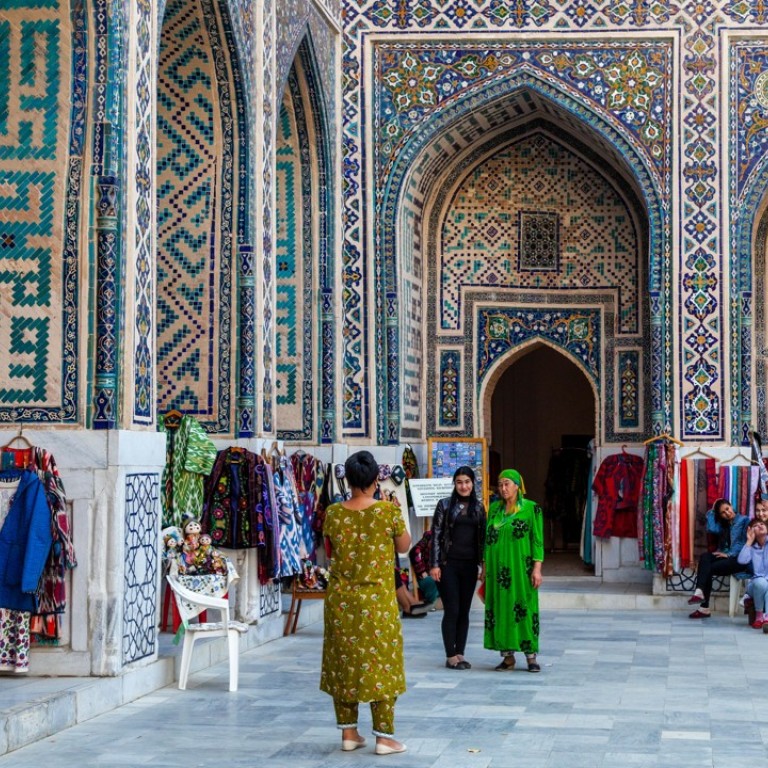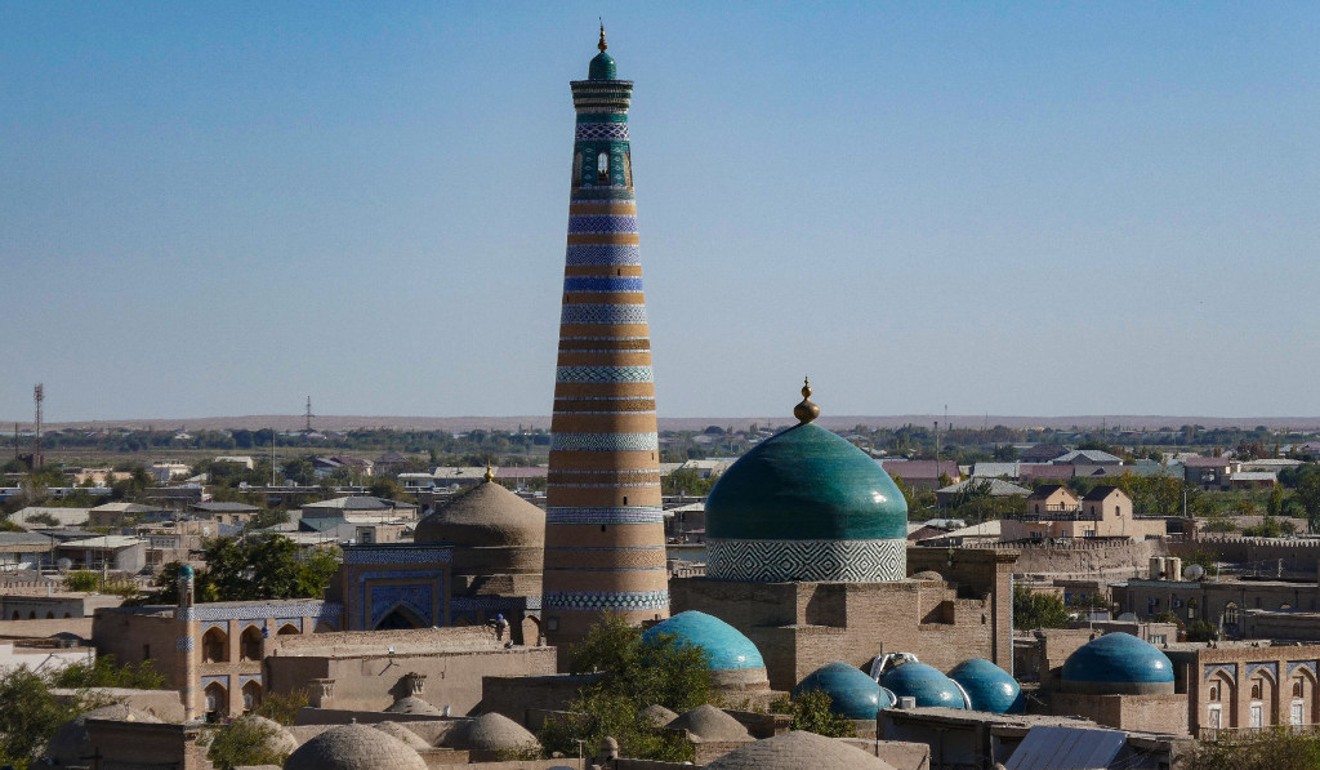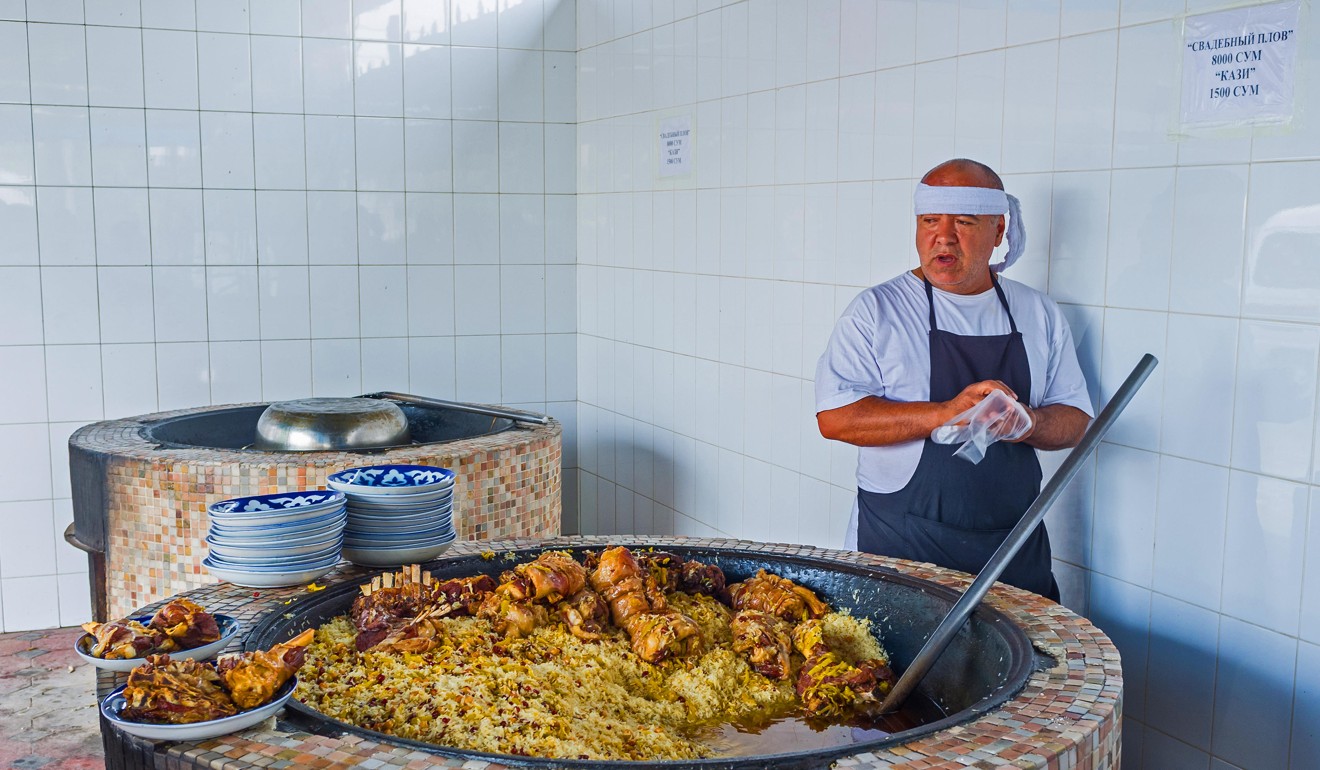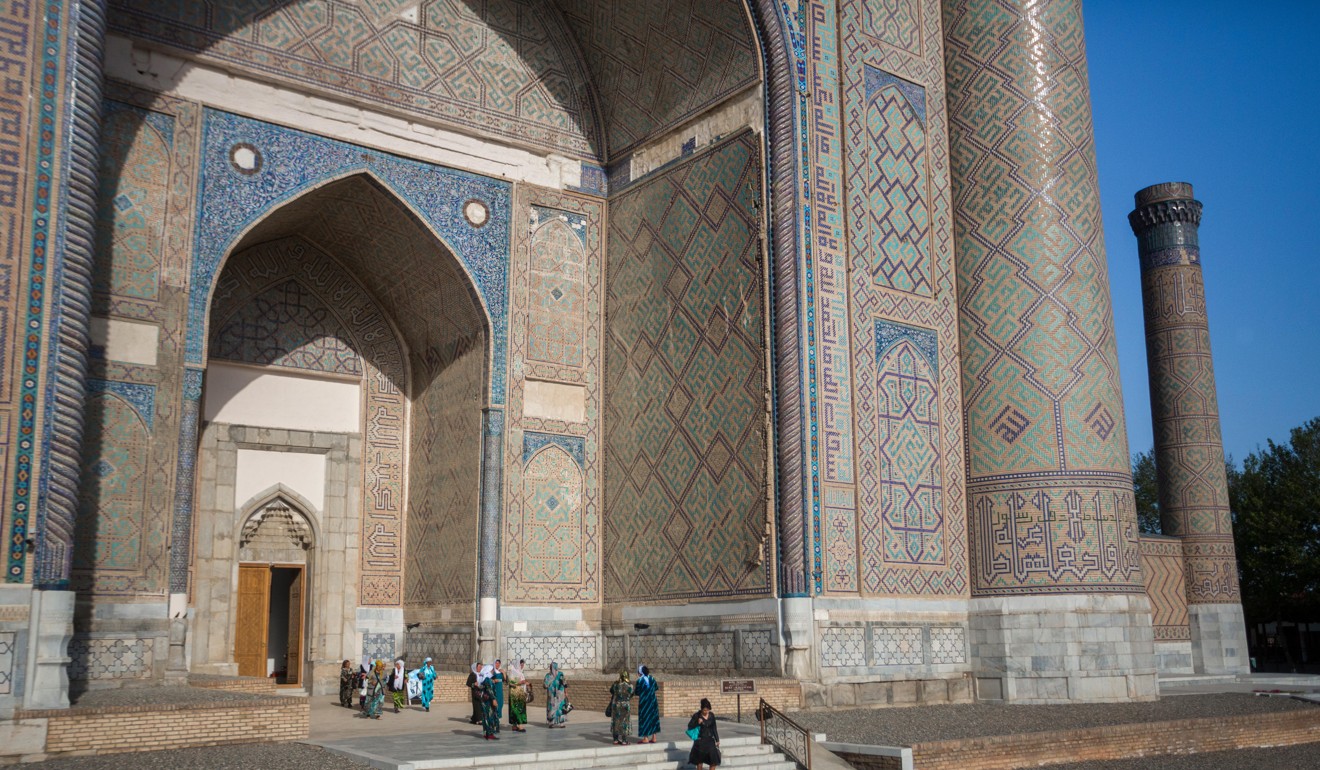
Uzbekistan: ancient architecture, friendly locals and plenty of plov
Madrassas, minarets, mosques and mausoleums form a stunning backdrop to the Central Asian nation’s colourful culture
Colour is my first impression of Bukhara. The buildings in this Uzbek city are a warm ochre, the raven-haired women sweeping the road dressed in clashing man-made fabrics made more garish still by high-visibility vests – worn to warn off who knows what traffic, since the roads are devoid of cars. A cobalt blue sky accentuates the geometric blue tiles of the Ulugh Beg madrassa, the shiny turquoise tips of the four minarets of Chor Minor and the dark earthen permanence of the Emir’s Palace and Ark Fortress.
But before a more thorough exploration, a bath. Close to my guest house are the Old Town baths, where men in tiny towels lay on stone slabs in ancient stone cavelike rooms, gasping as other men in tiny towels pummel their soapy bodies with bunched fists. I suffer the same treatment as bucket after bucket of hot soapy water is thrown over me. I am covered with an abrasive golden mixture of honey and ginger before being worked over once more, to leave me feeling as weak as a kitten, but aromatic – and no doubt delicious tasting, too.

The Soviet Red Army nearly succeeded where Genghis faltered, when soldiers blew holes in the minaret with their artillery in 1920, but the tower was restored in the 30s and Joseph Stalin allowed the madrassa beside it to reopen in 1944, whereupon it became the only functioning Islamic teaching college in the Soviet Union.

I arrived in Bukhara by train, from Tashkent, and I am leaving the same way. Ten thousand som (US$1.2) has secured me an upgrade to a “luxury” two-berth cabin, where the pictures on the velour blankets are more extravagantly kitsch than in standard class and the toilet has an actual seat.
The train rattles across the Kyzylkum desert, the watery spring sun finally dropping below the spirit level horizon as I am rocked to sleep. The desert is no Lawrence of Arabia sand dune romance, rather a flat, stony expanse of nothing very much that is sometimes dusted with snow in winter. We pass yurts and mud-walled adobe houses that are flat-roofed boxes; homesteads as primitive as the desert in which they stand. The only signs of life are the occasional lines of washing flapping in the gritty wind and a limping brown dog searching the floor for something, anything, and without the energy or inclination to bark at or chase the train.

The Itchan Kala complex, in the centre of town, is surrounded by brick walls with 10th-century foundations and here, at least, is life and colour. Work on the minaret ended in 1854, the story being that the khan was concerned a man at the top of the structure would be able to see into his harem and drool over his wives, and it stands incomplete to this day.

To get me back across the desert to Samarkand, 700km to the east, I’d asked at my hotel in Bukhara for a driver and had been recommended Akram, who is someone’s cousin – everyone is someone’s cousin in Uzbekistan.
We barrel north and west over the Amu Darya River towards the small town of Navoi, and lunch. “Kazakhs are very narrow in their thinking,” Akram tells me, having become embroiled in an argument with the owner of a tiny restaurant where the table condiments are Coca-Cola bottles stuffed with chilli submerged in oil.

A particularly pungent meat in Uzbekistan, mutton is ubiquitous; in plov and shorva soup, in the stuffed pockets of dough called manti and as thin shashlik kebabs grilled on greasy black oil drums by the side of the road. I have asked for my plov without mutton just once – and was met with raised eyebrows, quizzical stares and muttering – and have not dared to again.


When a piece of bread falls to the floor, it should be placed on a wall or in a tree for the birds to eat while the transgressor intones “Aysh Allah”, or “God’s bread”. Non is put beneath the head of a newborn baby to secure a long life; a family member who leaves on a long journey bites from a loaf and the remainder is buried or hidden until the traveller returns. Bread is part of Uzbek culture, tradition and folklore and respect for non means respect for the nation. I tear off the next hunk carefully.
North of Navoi is Nurota, which looks much as it must have done when Genghis Khan was smashing up its buildings. Akram wants to get to Samarkand as quickly as possible but I insist that we make a detour to the south of Nurota, and the petroglyphs at Sarmishsay. The roads are bad and the car bounces along as he floors the pedal, angry at having to go out of his way and unconcerned about burst tyres or breakdowns, because such things are in the hands of God.
At the pretty Sarmysh River gorge, the desert sun silhouettes distant camels plodding along as Akram breaks his indignant silence to tell me it is good to ride these beasts because doing so massages the prostate.

Samarkand – like the morning sky – is as blue as its billed. The city is a riot of medieval tiled mosques and madrassas. I cross the town centre’s public square, the Registan (“sandy place”), chewing on a piece of thick non bought from a fresh pile sold from an oversized, antique pram – taking care to allow no crumbs to fall.

I spend three days buying – and respecting – Samarkand’s bread and watching men worship at the mosques, where many arise from prayer to smile and wave. I crawl through the hole in the base of the massive Koran stand in the central courtyard of the Bibi-Khanym Mosque, thus “ensuring” I will stay fertile for many years.
There is nothing quite so rewarding, however, as sitting in the Registan, watching birds alight on the roofs of the madrassa and gold-toothed women in headscarves sell postcards. The smell of roasted shashlik wafts between the minarets and, in the evening, the building tiles turn a fiery orange in the fading light.
Even the plov in this part of town tastes good.
Getting there
There are no direct flights from Hong Kong to Uzbekistan. Connecting flights are available with Korean Air via Seoul.
